Monday 29th March 2021

TfL’s newest bus route numbered 456 began a couple of weeks ago on Saturday 13th March. As I remarked in my 6th March blog, introducing a brand new route when TfL is running a huge deficit with no certainty about future funding as well as during a pandemic lockdown seemed like a very odd decision. One could almost call it reckless.
At that time I hadn’t seen the new timetable and made a guess the 456 would need three buses to run the half hourly, seven-days-a-week service between Crews Hill (north of Enfield) and North Middlesex University Hospital (near Edmonton). In the event, the timetable requires four all day buses with a fifth coming out in the peaks and on Saturday afternoons. That must mean annual operating costs, I’m guessing, of at least £800,000, and I wouldn’t be surprised if that fifth bus pushes the bill towards £1,000,000.
As described previously, the northern half of the route, between Crews Hill and Enfield – about a five mile distance – was previously served by a very limited off-peak service (four off peak return journeys on Mondays to Fridays with seven on Saturdays) numbered W10.
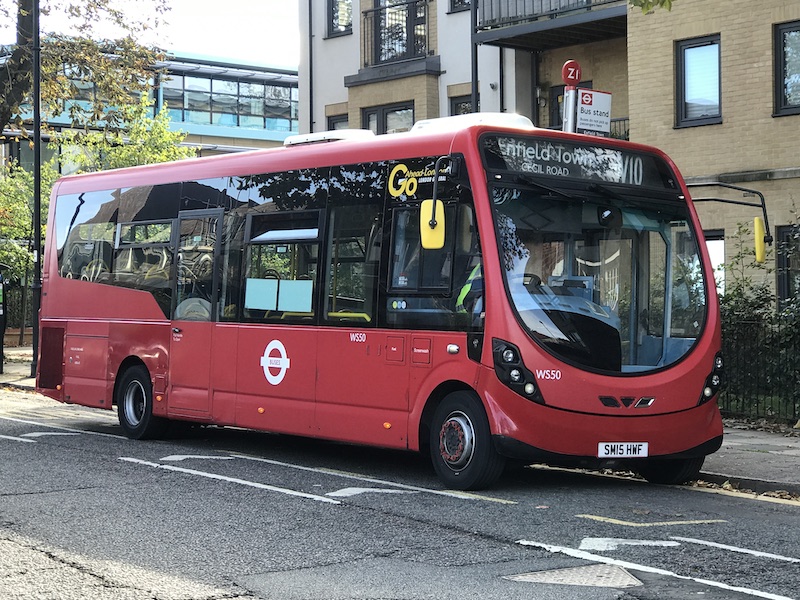
Route W10 began in 1992 and originally had its northern terminus at Crews Hill Station although six years later it was extended north to Cuffley Station, only to be cut back again to Crews Hill Station after five more years in 2003; then after another five years in 2008 Crews Hill Station was abandoned as a terminus and the route was cut back to a small residential estate about three quarters of a mile away with buses terminating in a road called Golf Ride.
Now the residents of Golf Ride must think all their birthdays and Christmases (other religious festivals are available) have come at once as after almost thirty years of a paltry bus service they’re now blessed with a half hourly, fourteen-hours-a-day, seven-days-a-week bus route. Quite an improvement.
After Enfield, the southern five miles of the route to North Middlesex University Hospital covers roads already served by other TfL bus routes but two miles are virgin bus territory – a short stretch of Worlds End Lane and a section of route through Grange Park and Winchmore Hill between Church Hill, Winchmore Hill Station, Farm Road and Firs Lane.

End to end journey time is 50 minutes during Monday to Friday off-peaks increasing to 63 minutes in the peaks (hence the need for a fifth bus) with times ranging from 41 to 57 minutes on Saturdays and 38 to 48 minutes on Sundays, such are the variable traffic conditions in London’s suburbs these days and contractual terms mean bus operators are ultra cautious on running times.
So to summarise all that, TfL have begun spending approaching £1,000,000 a year to provide a new bus service along 2 miles of roads previously unserved and an increased service from 54 single journeys across a six day week which have operated for 29 years to 410 journeys over seven days along 5 miles of road. Is that good value? To be fair, route 456 does provide some new cross Enfield links over its ten mile route including a new direct service from Enfield and Winchmore Hill to North Middlesex University Hospital, which is how it all started with a July 2017 TfL report “Review of Bus Services to London’s Hospitals”. The fourth priority action in that report was “direct new bus links to Winchmore Hill and Enfield” from North Middlesex University Hospital.


As you can see from the extract above, even without the Crews Hill northern half of the route, the operating costs were assessed four years ago at £740,000 so my earlier assessment is certainly not wide of the mark, and may even be a conservative estimate. You’ll also notice the service is expected to generate 100+ customers per day which works out at just two passengers per journey – which at an assessed cost of £47 to run each journey is quite a subsidy per passenger.

TfL carried out their usual consultation exercise before introducing route 456. This took place between between 28th October 2019 and 5th January 2020 attracting 513 responses. Not surprisingly many respondents welcomed the new service, especially those previously served by the infrequent W10.
The Crews Hill Residents Association welcomed the massive increase in service provision to their area, while the Winchmore Hill Residents Association “could see there was a case for the route based on the lack of available existing bus services along the proposed route” but did identify issues with bus stop locations and made suggestions where these could be improved following local complaints.
As is inevitable with any new bus route you always get the ‘not past my house’ brigade having a whinge and sure enough a “STOP the 456 Bus Route on Firs Lane, Station Road and The Surrounding Area” appeared on the 38 Degrees website which garnered 100 signatures quoting Liz Rhodes Healthy Streets Community Relations Officer at the London Borough of Enfield stating they “are working with residents to make our streets quieter and safer” to which the petition organiser asserted (their capital letters): “HOW can this possibly be achieved with a BUS ROUTE going through the centre of the designated area, let alone the polluting exhaust fumes from increased traffic i.e. bus and traffic build-up from the 3 local schools”. TfL also received a 45 signatory petition from Farm Road residents raising concerns about “congestion, noise and anti-social behaviour” as well as, wait for it, “reduced property prices”.
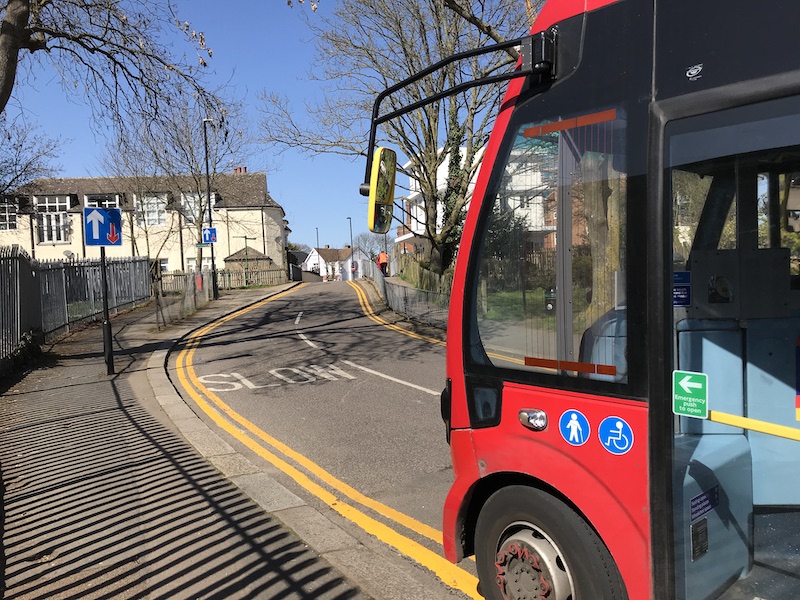
Farm Road has a particularly dodgy bridge over the New River but TfL reckoned their route tests, including one during the morning peak period, showed it wouldn’t be a problem. “In response to the concerns about the suitability of Farm Road at peak times, we had a further route test on 26 February 2020 to drive the bus across the bridge and along the road in the morning peak time. TfL and Enfield Council staff attended this route test and confirmed that the route is suitable” according to TfL’s consultation report back.
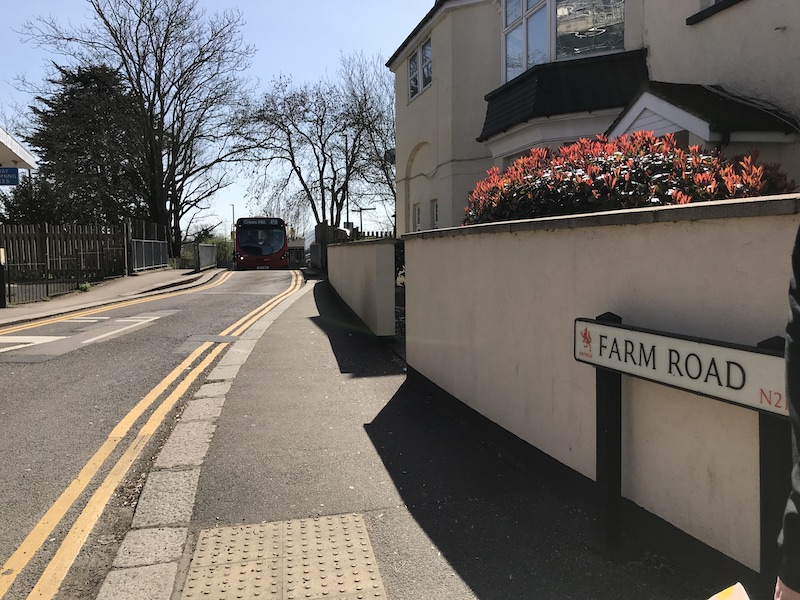
Route 456’s introduction, as is often the case with TfL, suffered a few set backs with postponed implementation dates in the second half of 2020 due to highway management issues needing resolution including installing a ‘bus only’ right turn in the Caterhatch area north of Enfield to save a double run to a roundabout the W10 had used and in Firs Lane a gate previously only available to emergency vehicles has been made into a ‘Bus Gate’.
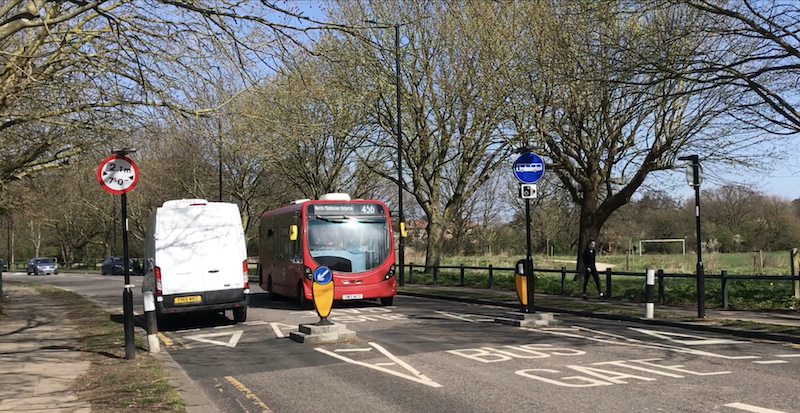
On my trips sussing the 456 out this morning it was good to see bus stop plates have been updated to include a 456 number where the route shares stops with other established routes as well as a timetable inserted into the panel below. In Hedge Lane fixed bus stops have replaced the previous ‘hail & ride’ arrangement used by route W6 and these bus stops were all in place. But it’s so disappointing to see the ‘spider maps’ where displayed haven’t been updated including at the main terminal point for North Middlesex University Hospital.
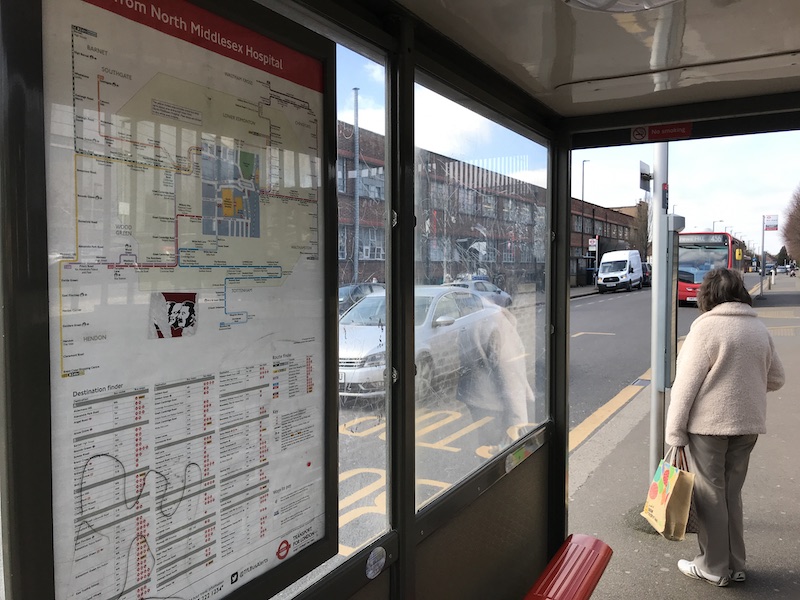
This is completely inexcusable bearing in mind it’s the route’s main traffic objective and there’s been ample time to prepare an update due to the aforementioned introduction delays.

Not only that but whereas the two other established terminating routes 318 and 491 use bus stops right outside the main entrance to the hospital, the 456 has been banished to a new ‘bus stand’ on a side road round the corner where there are no seats for waiting passengers and the first stop for the 456 is in fact the second stop for lucky passengers using the 491 who have a choice of where to board.

I expect the reason is space constraints outside the main entrance but you’d think TfL would have made sure there were notices at the main stops explaining all this for passengers venturing on to the 456 for the first time.

On a positive note, at least the online spider maps have been updated.
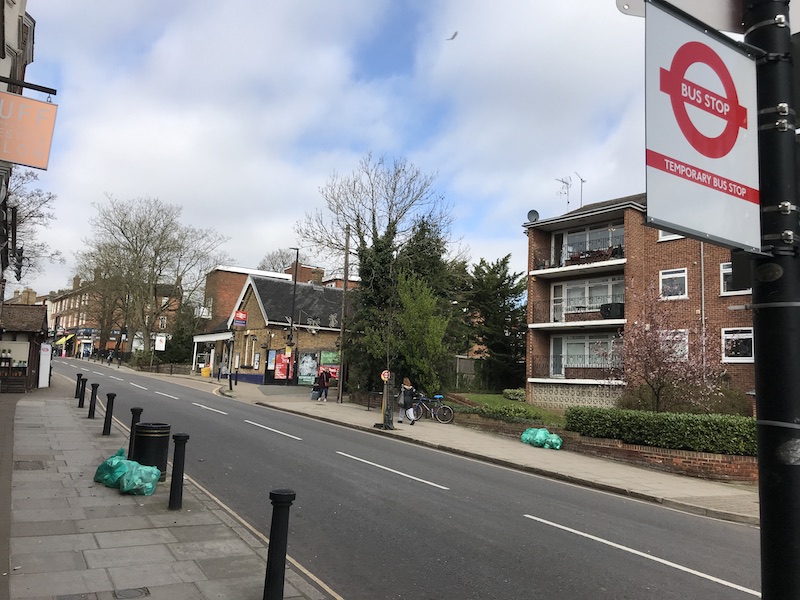
Elsewhere the virgin bus territory is littered with temporary bus stop plates and ‘dolly stops’ giving no information about the new route, where it goes or journey times for potential passengers.

While I was waiting at the ‘dolly’ outside Winchmore Hill station this morning a passer by kindly stopped to advise me “the trains are running today” as he thought I must be waiting for a rail replacement bus which had been operating yesterday! He was most intrigued when I told him about the new bus route.
At another temporary stop at the top of Farm Road, where I was most impressed to see three other passengers waiting, it turned out one was on the wrong side of the road for her intended destination.

I saw quite a few empty buses during my travels today but there were also some reasonable loads for the third week of a new unpublicised route. Indeed my journey towards Crews Hill at 13:36 had 14 on board as we left Enfield Town – three more than the bus’s Covid capacity. Mind you the fourth and final trip of the day that had run for the past 29 years on route W10 was at 13:25 so I’m sure we benefitted from picking up established riders.
At the Crews Hill end of the route it’s a great shame the 456 hasn’t been re-extended to the station making for a convenient interchange and connection for residents of the Golf Ride area, especially now it runs every half hour. It’s about a 10-15 minute walk depending where you live on the estate and helpfully there is a footpath from the western end of the estate.

There’s an abundance of garden, leisure and home furnishing type retail outlets along this stretch of the quaintly named Cattlegate Road to the station which attract many customers by car and would make for a decent traffic objective along with the station at the northern end of the route.
I appreciate there’s nowhere to turn a bus round in the road at the side of the station and a reverse manoeuvre (as used to apply) is probably too high on the risk register ….
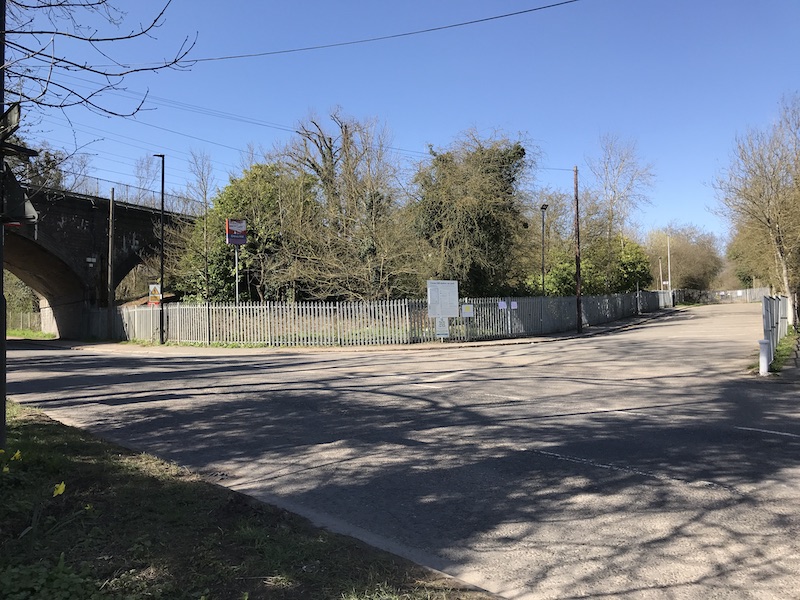
…. but I did notice the Enfield Garden Centre, very close to the station, has a ready made turning loop/lay-by on its property if suitable negotiations could take place.
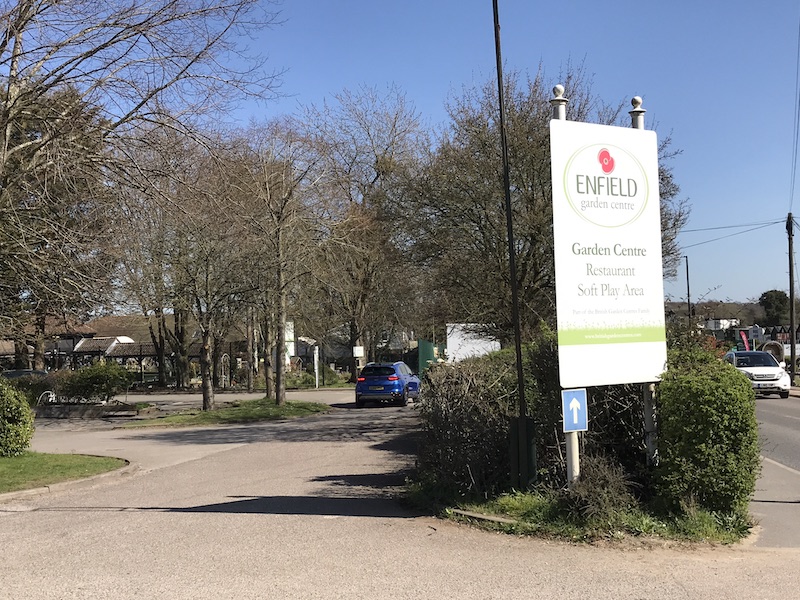
TfL have aspirations to extend the route, so maybe it will come about one day. “We are in discussions with the Borough and rail companies to investigate options for a safe turning point for buses” according to TfL’s consultation report.
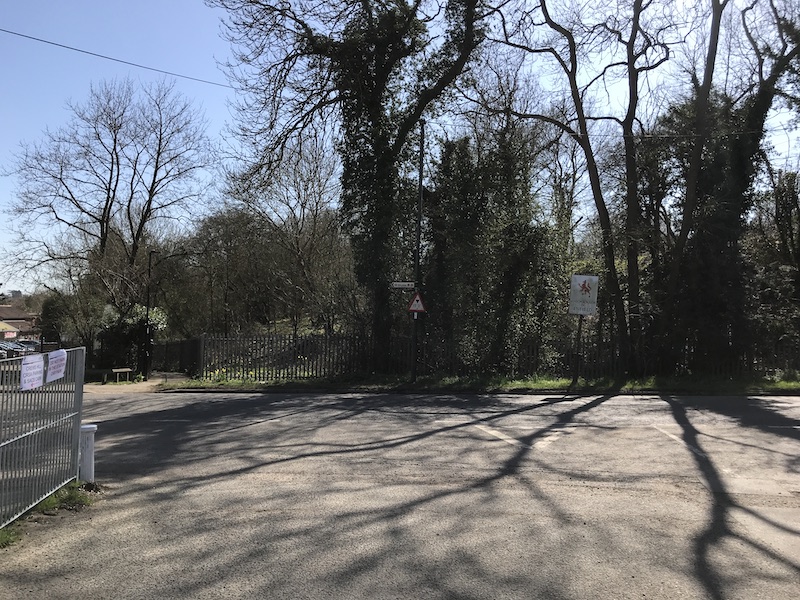
I did spot a directional sign on a lamppost pointing to supposed nearby bus stops ‘A’ and ‘B’ at the bottom of the road leading from the station’s entrance, which I can only assume is left over from the days when the route reached here – so only 13 years out of date!

The running time on the route seems adequate although is currently under strain due to single lane alternate working traffic lights for road works on the busy Slades Hill west of Enfield. On one trip I made I was a bit surprised there was a driver changeover at a bus stop a couple of minutes before the hospital terminus – indeed it’s at a stop called ‘North Middlesex Hospital’ on nearby Silver Street. I guess it’s handy for Go-Ahead London drivers based at Northumberland Park bus garage where route 456 is housed, but it’s very frustrating for passengers itching to get to the terminus to be delayed by drivers doing their stuff and chatting away – including being maskless on the bus this morning. Not a good image Go-Ahead London. And the bus had a very loud annoying rattle.

Having spent the best part of the first two decades of my life living close to this route, it was a lovely nostalgic trip back down memory lane today and it’s nice to see a new route pass within a few yards of where I used to live for the first time. But it’s a very strange time to be introducing a new route – rather like the extensions to routes 404 and 383 I blogged about in 2020, but the scale of the 456 with five extra buses is to a whole new level of cost commitment at such a perilous financial time for TfL. I wish it luck in generating passengers, certainly permanent bus stops with timetables and updated ‘spider maps’ will help and maybe even some pro-active marketing wouldn’t go amiss.
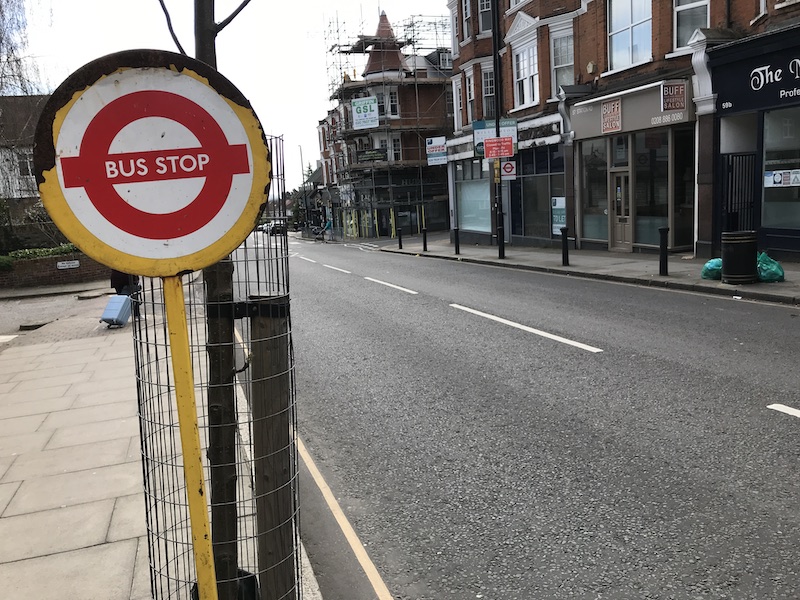
Finally I’m a bit mystified why the W10 number wasn’t retained for the newly extended route – as the W6, W8 and W9 are all very close by and it would fit logically into that sequence for the local area served and have saved some bus stop tile replacements in the Enfield area too. However in my later teenage years the main north-south bus route through Winchmore Hill was the 123, and I can’t help reflecting how appropriate it would have been if that was still the case leading to a 123 connecting with a 456. And maybe even a Green Line 789 passing through too! I’ll stop there before it gets too silly.
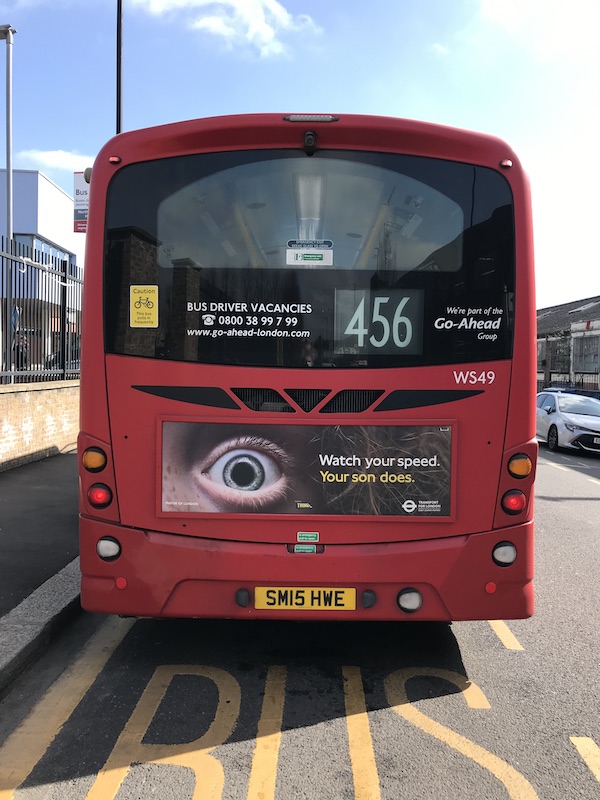
Roger French

Londoners are expected to face a massive tax raid as Sadiq Khan scrambles to protect the city’s transport network from a long-term plunge in commuting.
Demand for buses, underground and rail services will never return to pre-pandemic levels, according to a bleak report from credit agency Moody’s – a trend that risks crippling the finances of tube operator Transport for London (TfL).
Analysts have predicted that passenger numbers will permanently fall by a fifth as commuters embrace home working. A leading transport academic said that Mr Khan, who is mayor of London and TfL’s chairman, is most likely to impose new taxes to fill the hole
The London authority is forecast to lose more than 12pc of its operating revenue.
LikeLike
The combination of a £47 per passenger subsidy and a requirement for Government funding does not sit well where there are places with much more deprivation without the alternatives here.
Having said that, there is a bit of me that supports this, just to annoy the residents who do not want the bus.
LikeLike
Rodger, you can find out how much services cost using the TFL website. They say that this service costs over £1m to operate. Absolutely disgusting. For this service outside of London, you would be paying half of that. TFLs requirements push the prices so high. If they simply staggered (decreasing the frequency rather than increasing it) in the peaks, they could save so much money as the 5th bus wouldn’t be needed. It will be interesting as well to know what the timings are like as if it’s anything like normal TFL, the timings will be very slack and so another bus could have maybe been saved by cutting the slack and the very OTT 20-30 minute layovers.
https://tfl.gov.uk/forms/13796.aspx?btID=1854
LikeLiked by 1 person
Many thanks for that link. Very interesting. I wasn’t far out then! Totally agree with you re adjusting peak frequency/timings to make sensible cost savings.
LikeLike
Sorry for this late reply, it’s taken so long to take in all the information .I do think that employing this tactic of actually riding on the bus in question is a revolutionary idea that both, The council and TfL, could employ on future occasions. I do realize that this sort of action does seem unfair, and that due process is important, but so is the financial burden. Relying on technological Hocas Pocas, from the likes of Google. I didn’t how important this area was!! However there was a small matter, which we’ll just call the
“Capone” effect. Something I’m familiar with.
It doesn’t take much imagination (I don’t think), to picture the scene—WHAT A FIASCO–. If we take out the padding and red herrings, we are just left with; the government v the government. Which means we all loose/win eventually! However there is loads of additions, one is. Roger, 50 odd years ago, when I was a kid, I used to get the 135 from Enfield Town to see my auntie in Ponders End. In those days it sounded like a bus. Now, in this technology rich society, buses sound like a bus that are about to fall apart, well this one does, and of course, it still sounds like a bus. Maybe a MOT certificate is in order.
LikeLike
Schedules should be frequent, and easily usable by riders. Not every bus has to have high frequency, but there should be a useful network of lines with high frequency all day, working alongside Metro. When possible, schedules should run on a clockface pattern
LikeLike
confusing isn’t the word. It’s all about political point soring, whatever the cost .These costs may not always be financial.
.
LikeLike